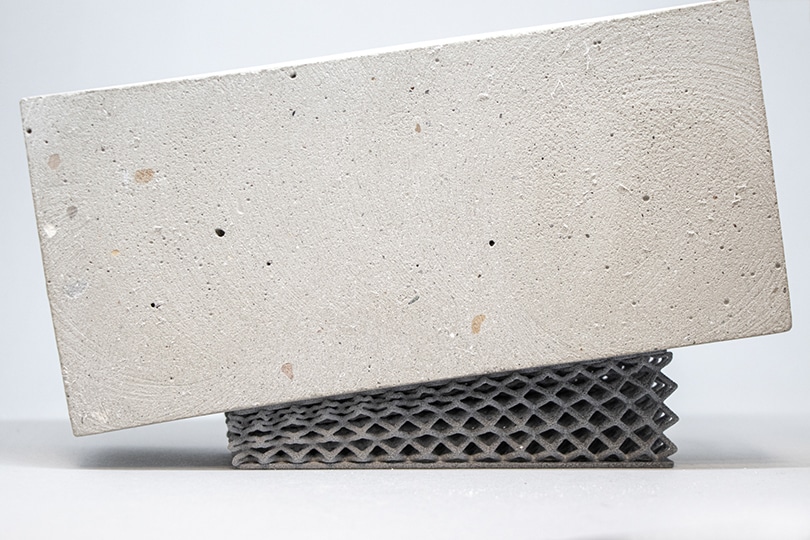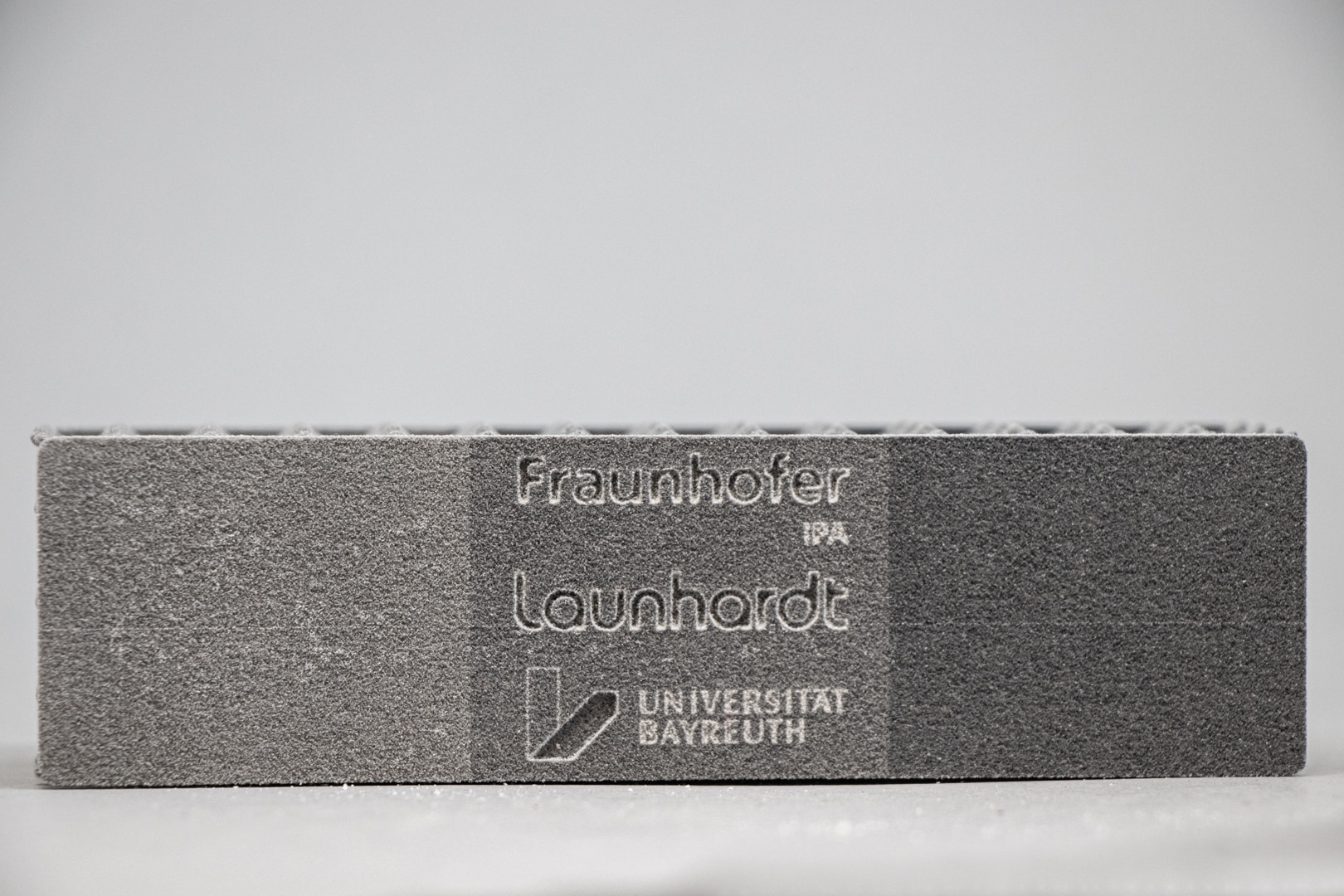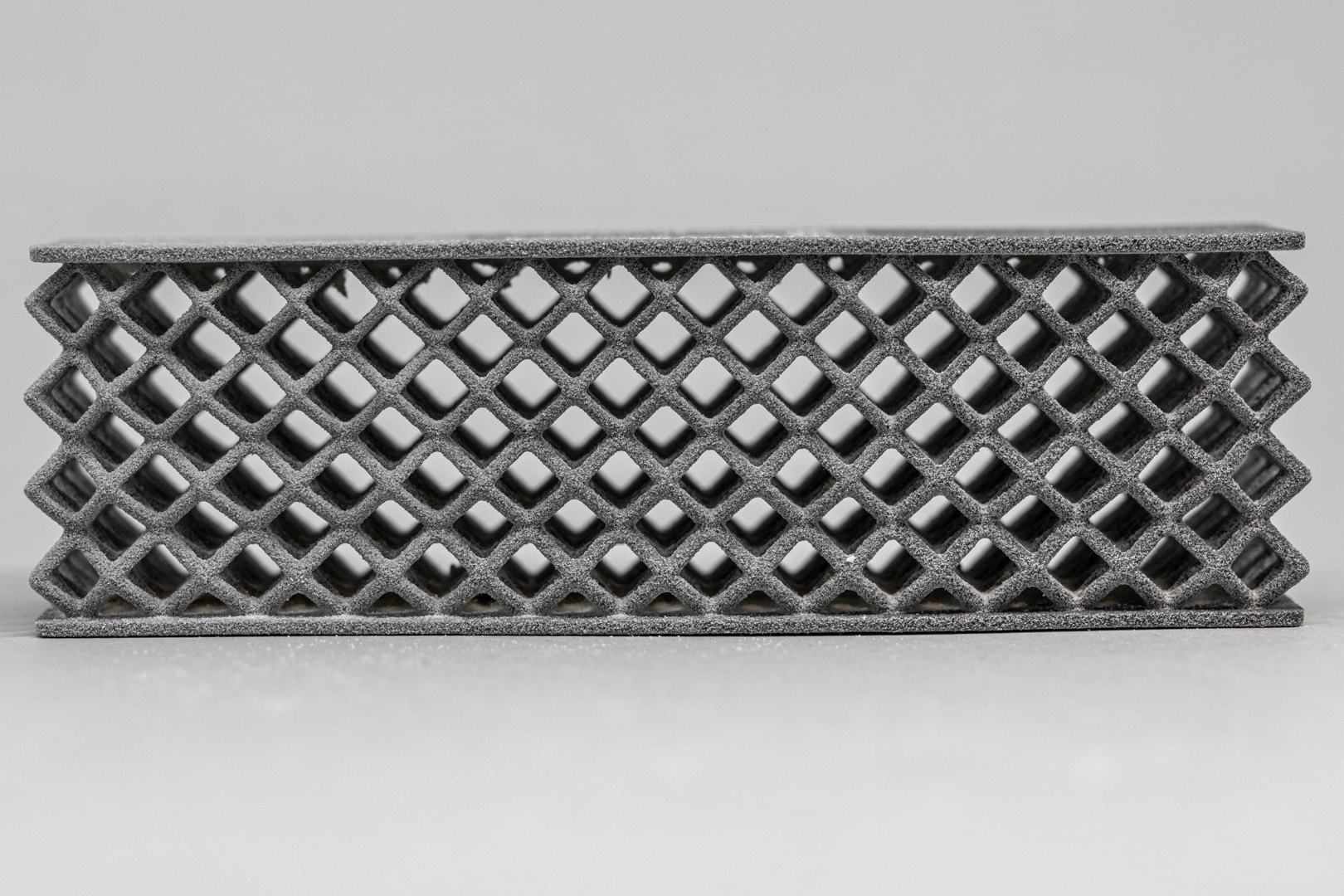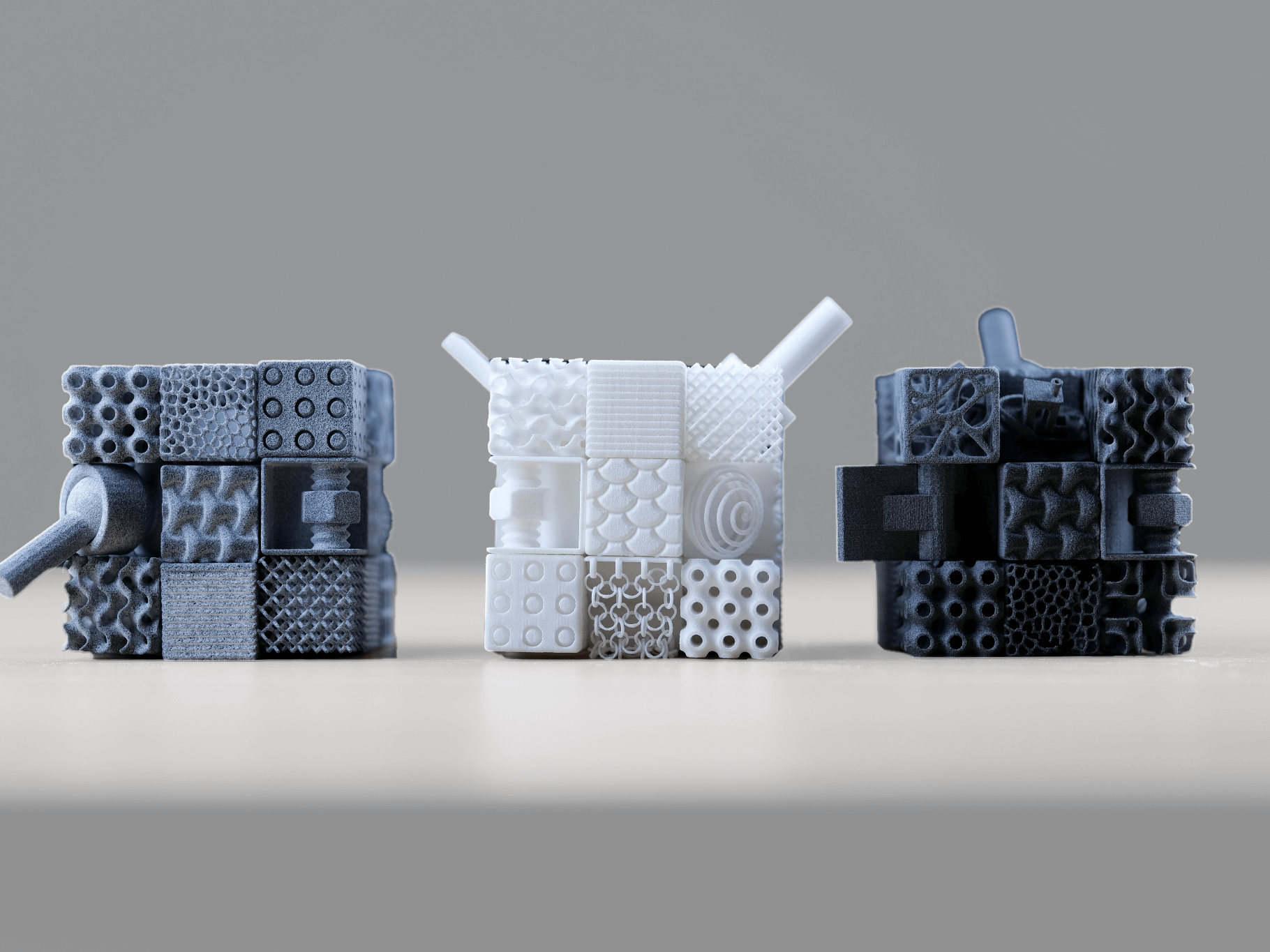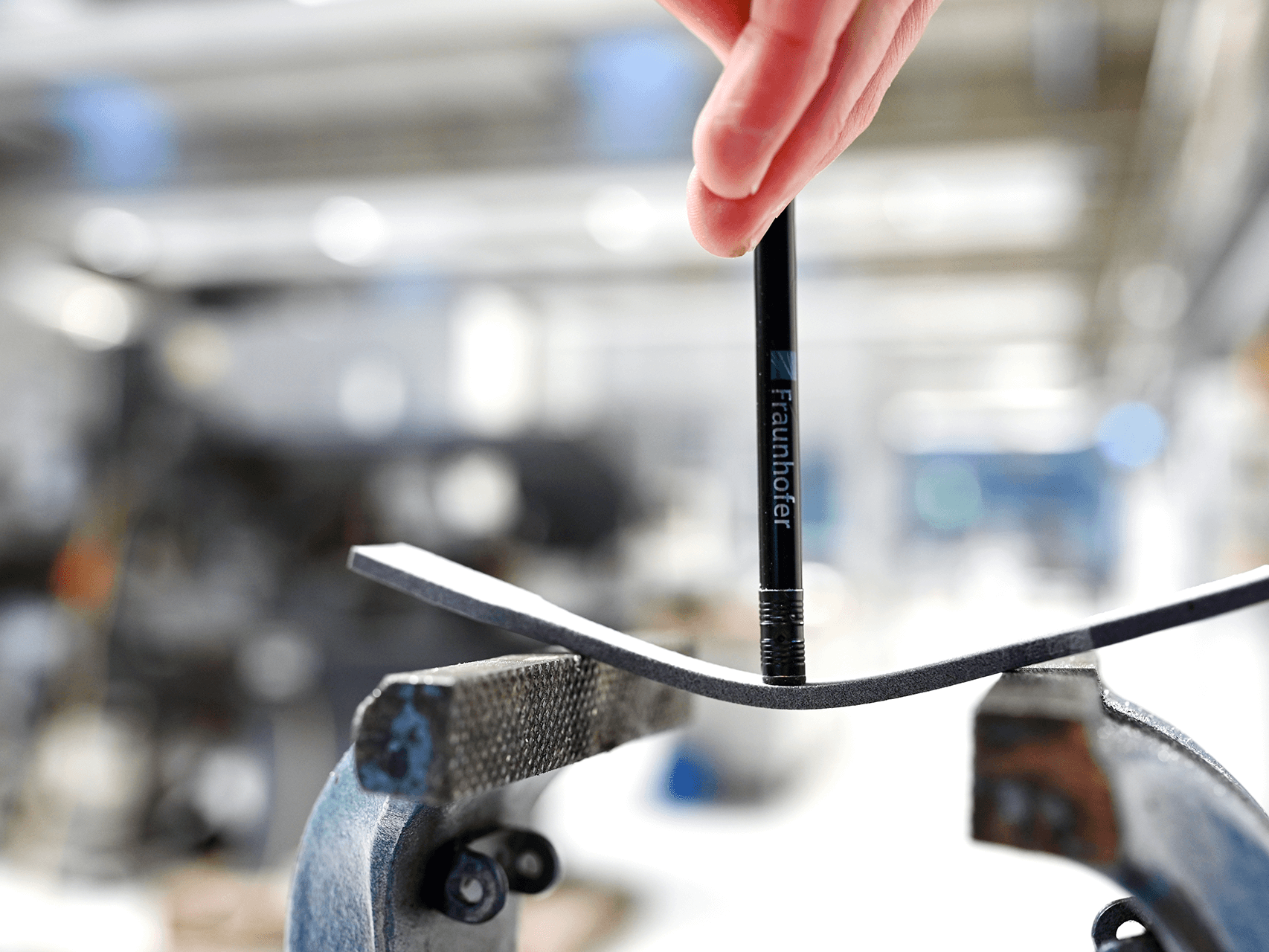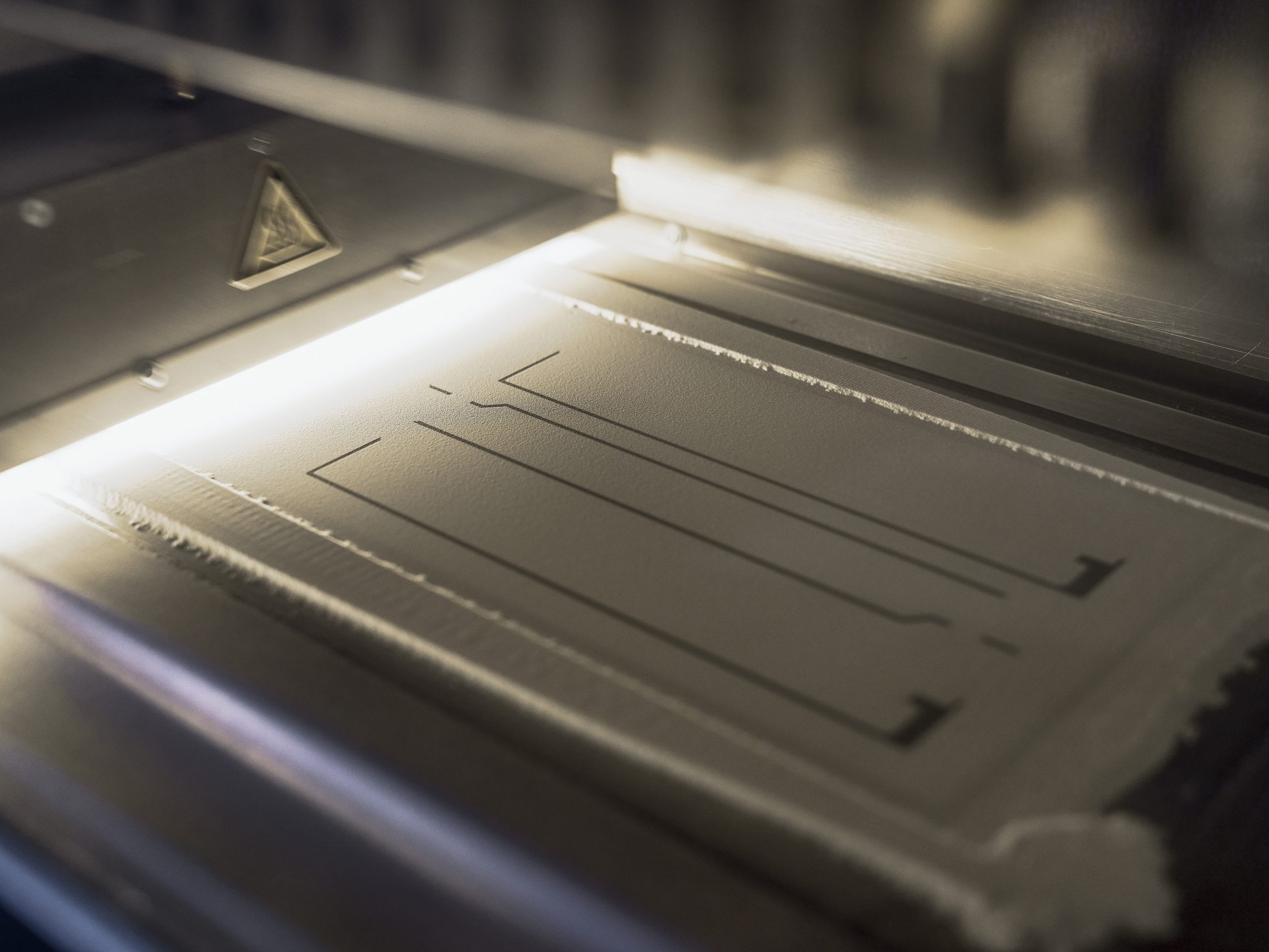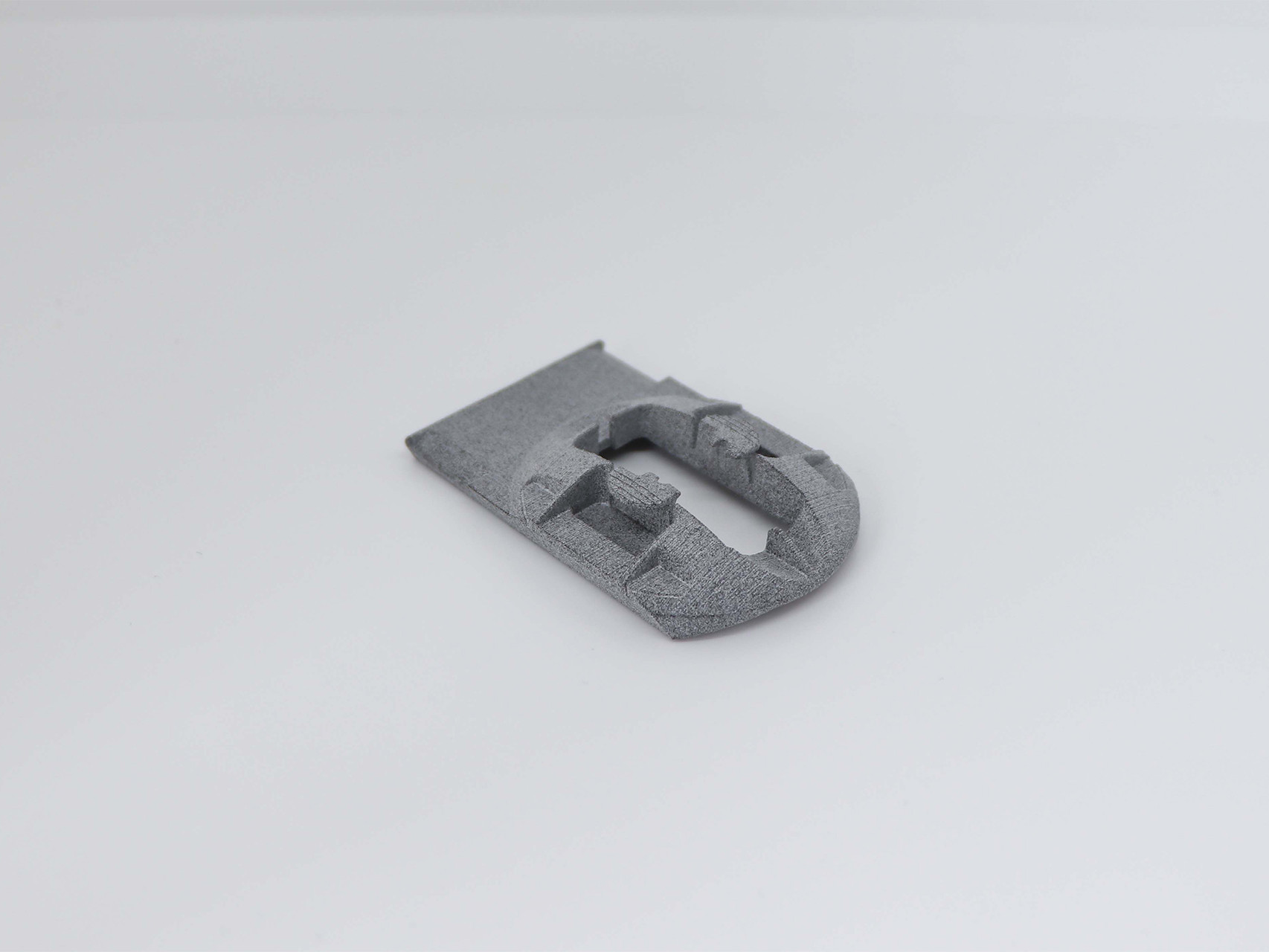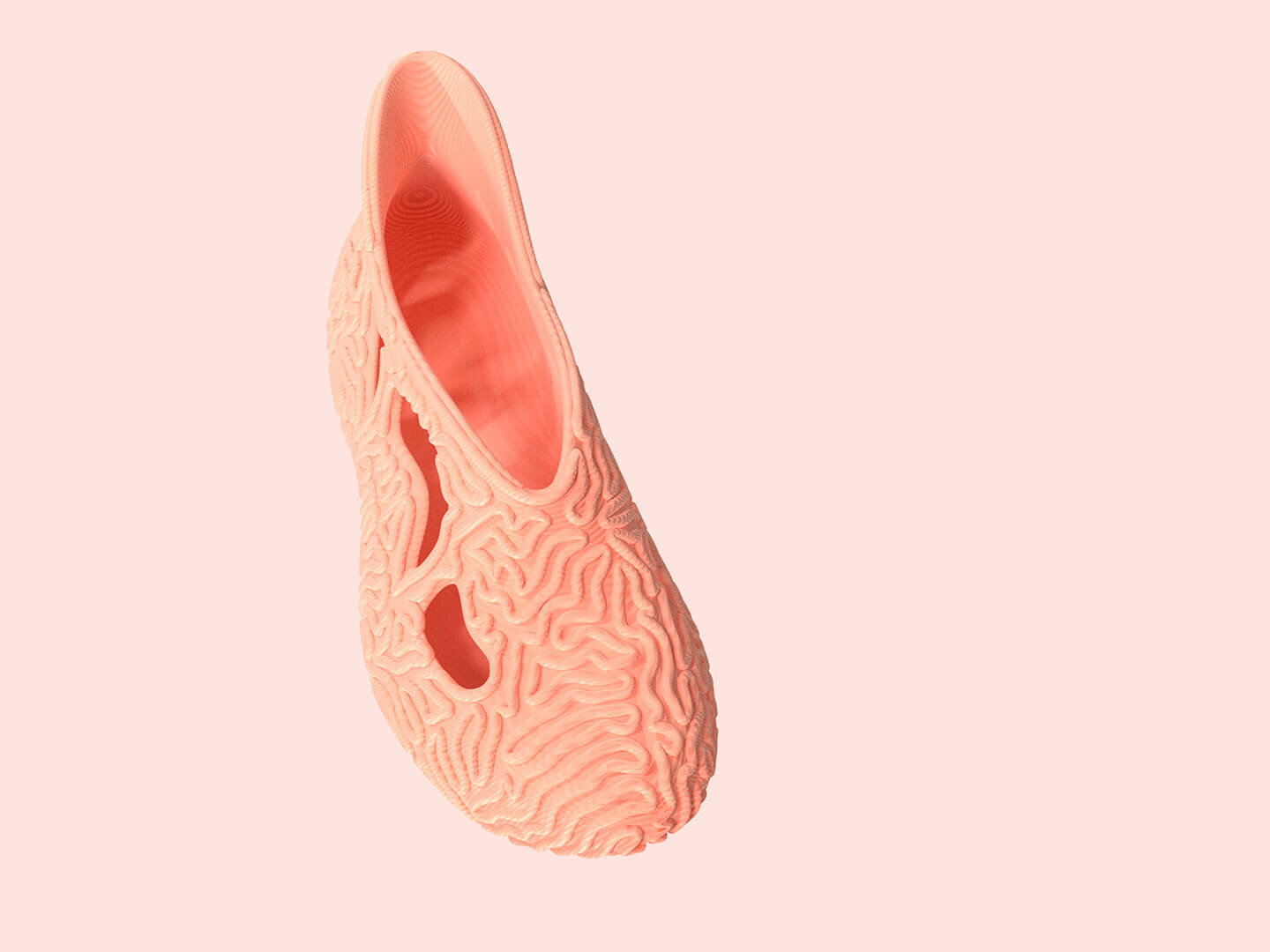- Home
- Case Studies
- Consumer Goods
- HSS Material Network – Proof of Concept TPU Launhardt
HSS Material Network - Proof of Concept TPU Launhardt
The HSS Material Network is an interdisciplinary network of selected experts dedicated to making the development and qualification of new polymer materials for the additive manufacturing process High Speed Sintering (HSS) more flexible and faster.
The VX200 HSS from voxeljet is designed as an open source 3D printing system and provides full access to process parameters and temperature management to best match the additive manufacturing process and material. The HSS Material Network offers customers a flexible and low-risk outsourcing option for material development of additive manufacturing technologies. The addition of the competencies of the HSS Material Network partners enables companies of all sizes to receive unique support, from an initial suitability assessment, through specific development and parameterization, to certification or market-ready qualification of the material. Here we present our partners, projects and proof of concepts.
1. What exactly distinguishes your TPU compared to other TPU's available on the market?
Launhardt’s TPU is the softest on the market and offers the best trickling and thus processing properties due to its spherical particle shape.
2. For which applications (industries, products) is your TPU suitable?
The Launhardt TPU enables the production of a wide variety of parts such as bellows, sealing profiles, machine feet or even shoe soles and orthopedic parts. The soft and rough surface enables the production of haptically appealing surfaces. For instance, the material can be used to imitate leather.
The possibility of chemical smoothing results in a sealing of the surface and furthermore the functionality of media-tight parts (e.g. sealing elements).
3. Which properties of your TPU can be influenced/optimized by additive manufacturing? What role do grayscales play? Does this expand areas of application? If so, to what extent (markets, products)?
With the application of grayscale printing, the Shore hardness can be directly influenced. In this way, parts with stiff and softer structures can be economically implemented in one part. These graded part properties could be used, for example, for elastic and damping lattice structures such as those used for sports articles (shoes, backpacks, saddles, etc.).
4. What are the strengths/weaknesses of HSS in processing your TPU? Especially compared to other additive technologies such as SLS?
Since TPU absorbs the energy for melting very slowly, the HSS process is particularly suitable for clean and stable processing of TPU. Unlike SLS, the energy is introduced physically slowly, so that the thermoplastic material has sufficient time to melt and bond interlaminar without producing smoke. Since this does not reduce the processing speed, the HSS process enables economical and stable processing of the Launhardt TPU.
5. Which further steps are planned after the material analysis? Will the material be fully developed/qualified for HSS?
Since we also process our soft TPU material ourselves (previously in SLS) and thus achieve the best possible part properties for our customers, we are planning to diversify into new and promising powder-based additive manufacturing processes. In particular, the HSS process is very attractive, as the process is fast, predictable and stable and enables individual part properties.
The TPU from Launhardt GmbH is one of the softest on the market. In combination with HSS grayscale printing, the material properties can be influenced in all three dimensions by changing the printed ink volume. This makes it possible to incorporate different material properties, such as hardness lines, into a component regardless of the geometry.
More Case Studies
3d printed joysticks for tractors and machines
For Lindner Traktorenwerke, 3D printing is already an alternative to injection molding. For example, for customized joysticks and control elements for their tractors.
URWAHN – 3D printing in bike manufacturing
To produce its e-bikes, URWAHN has focused on reshoring and lean management and is achieving these goals through additive manufacturing. Learn what role the voxeljet technology plays.
Industrial Polymer 3D Printing Review: An extensive comparison of voxeljet HSS, HP MJF, and SLS
Whats the difference between HSS, MJF and SLS polymer 3D printing? Get to know the three main AM technologies for polymers in this extensive comparison.
HSS Material Network – Proof of Concept HDPE
Together with Fraunhofer IPA we have qualified the polymer HDPE for additive manufacturing within our HSS Material Network.
HP Multi Jet Fusion and voxeljet High Speed Sintering in comparison
The 3D printing processes MJF and HSS in comparison: Where are the differences and advantages for users?
Polymer sintering in custom mechanical engineering
With High Speed Polymer Sintering, prototypes can be realized much faster and economically viable.
3D printing for the perfect sneaker
How polymer high speed sintering (HSS) can be used to develop the perfect 3D printed shoe.
Industrial 3D printer
Our portfolio of industrial 3D printers ranges from compact systems for research to additive series production.






















